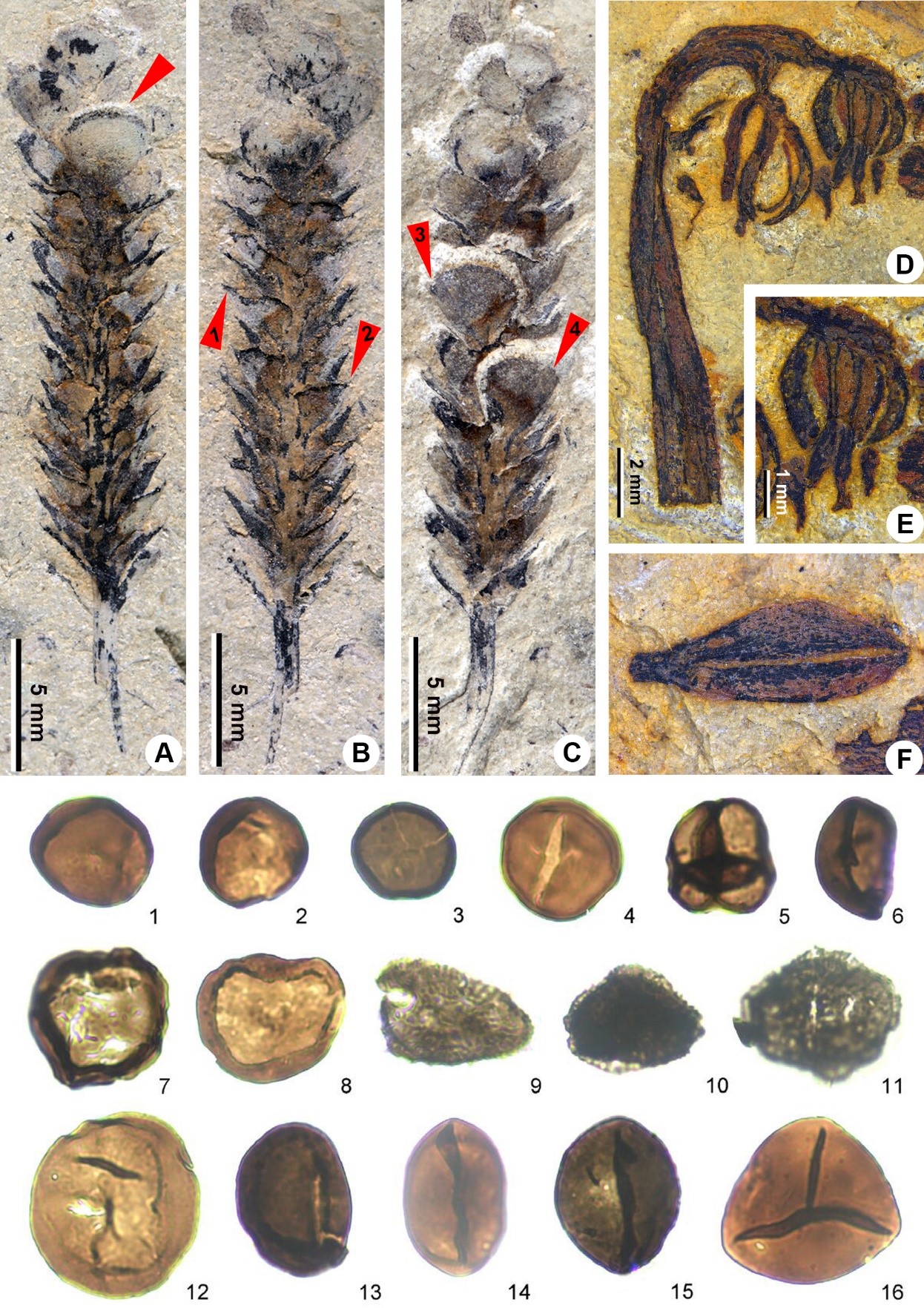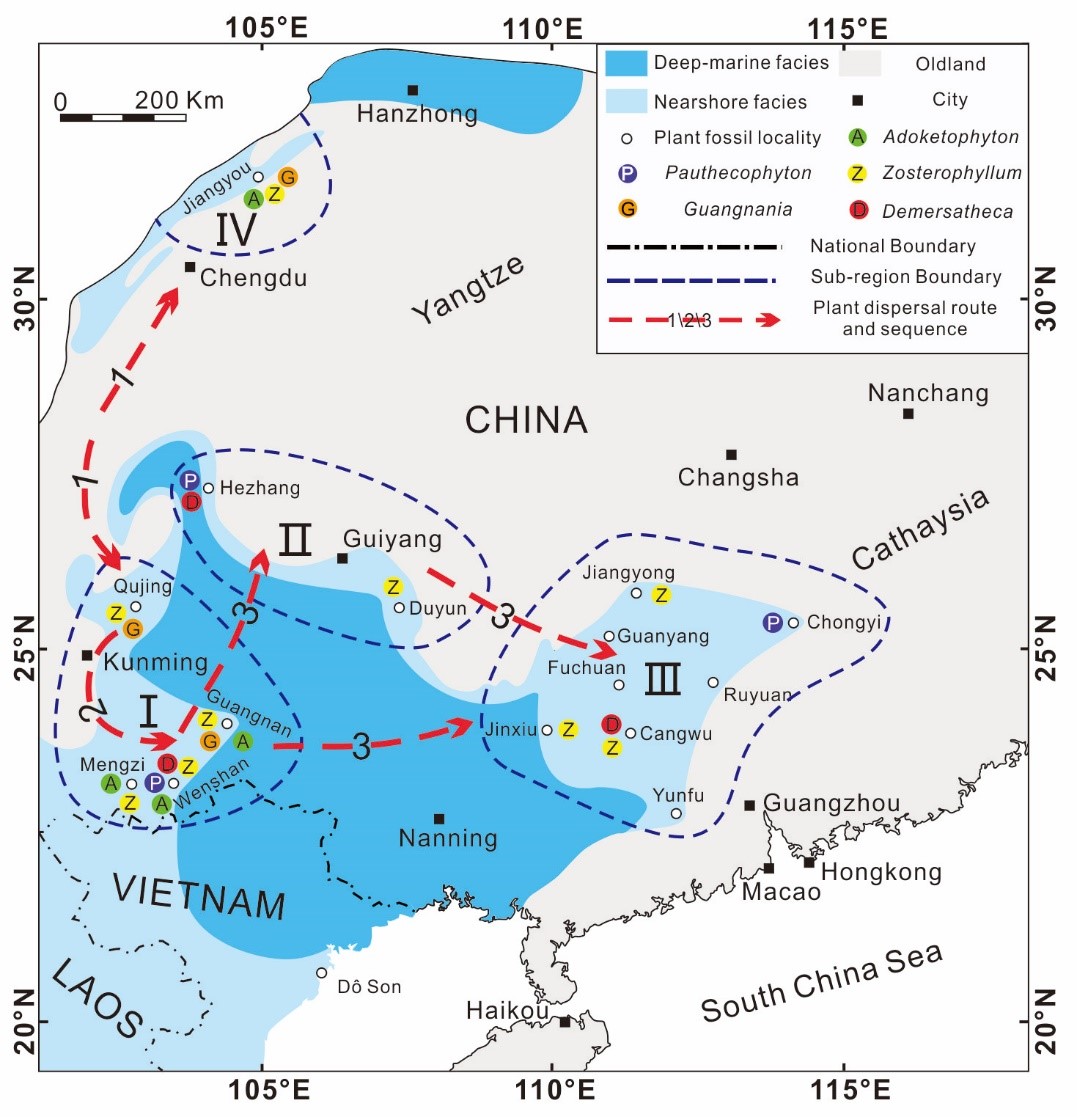The Lower Devonian deposits develop well and are widely distributed in the South China Plate, Its Early Devonian flora shows high endemism especially at the generic level. The Posongchong flora from the Lower Devonian of Yunnan, as a representative working area, has a total of 28 genera and 37 species of plants and over 70% genera are endemic. Several regional floras other than Yunnan have been discovered from southern China, as Pingyipu of Jiangyou, Yangling of Chongyi, and Shiqiao of Cangwu.
Recently, a systematic palaeontological study based on materials from the Lower Devonian of Hezhang, Guizhou Province is conducted by the Devonian Investigation Group (DIG) of Nanjing Institute of Geology and Palaeontology, Chinese Academy of Science (NIGPAS) , led by Prof. XU Honghe, and Dr. WANG Yao from Qufu Normal University. The related research results were published in international journals Review of Palaeobotany and Palynology and Philosophical Transactions of the Royal Society B.
Abundant and diverse palynomorphs are firstly recovered from the megaplant fossil-bearing beds. The palynological assemblage is summarized as Retusotriletes triangulatus–Latosporites ovalis–Apiculiretusispora plicata (TOP) and contributes a better understanding of the Lower Devonian palynoflora of South China. Hezhang TOP palynological assemblage is dominated by trilete spores and includes 36 genera and 72 species of spores. Qualisaspora sinuata and Gneudnaspora divellomedia var. divellomedia, are for the first time discovered from the Lower Devonian of China. The TOP assemblage also dates the Danlin Formation as Pragian to early Emsian (Early Devonian) and indicates a coastal palaeoenvironment with co-occurrences of acritarch and scolecodont.
The new finds of megaplant fossils from the Lower Devonian of Hezhang County, Guizhou Province, include Zosterophyllopsida Demersatheca and Euphyllophytopsida Pauthecophyton. Demersatheca contigua consists of cylindrical strobili with four longitudinal rows of sporangia decussately arranged and shows great similarities to the plant from Yunnan and Guangxi localities. Pauthecophyton hezhangensis has distinct fertile units with grouped sporangia and each unit with two or three fusiform sporangia. A new phytogeographical zone of Hezhang, Guizhou is recognized, which shows similarities with other coeval floras and contributes to a further understanding of Early Devonian flora of South China.
The whole South China Plate is subdivided into four sub-regions, eastern Yunnan, Guizhou, Cathaysia, and Sichuan based on their different floral compositions. The Guizhou sub-region shares some taxa with the eastern Yunnan and Cathaysia sub-regions within South China. The common plant members of these regions are distributed around the epicontinental sea. It is suggested that the Guizhou sub-region might act as a bridge aiding plant dispersal from eastern Yunnan to Cathaysia during the Early Devonian.
References:
Wang Y, Bai J, Liu B-C, Wang Y, Xu H-H. 2022 New insights into the South China Lower Devonian flora based on fossils from Hezhang, Guizhou Province. Philosophical Transactions of the Royal Society B377, 20210312. https://doi.org/10.1098/rstb.2021.0312.
Xu HH, Yang N, Bai J, Wang Y, Liu F, Ouyang S. 2022 Palynological assemblage of the Lower Devonian of Hezhang, Guizhou, southwestern China. Review of Palaeobotany and Palynology 297, 104561. https://doi.org/10.1016/ j.revpalbo.2021.104561.

Fig1. Megaplant fossils and spores from the Lower Devonian Danlin Formation, Hezhang, Guizhou Province

Fig 2 Lower Devonian flora regions on the South China palaeogeographical map. The red dashed line with arrows and numbers indicate the probable plant dispersal routes and sequence
Download:
